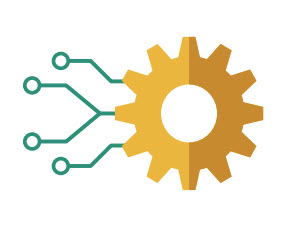3 Observations From The Patent Administrative Law Conference
This conference proved that companies and IP lawyers require a comprehensive understanding of the IPR process.
 As I wrote last week, I recently had the opportunity to attend three patent-focused conferences in the span of a mid-March week. After attending the first conference in New York, my next stop was “IPR-palooza,” otherwise known as American University Law School’s 8th Annual Patent Administrative Law Conference. At this conference, put on by headline sponsor Unified Patents (the well-known subscription service for companies interested in filing IPRs against prolific non-practicing entities), in-depth discussion of IPRs and the PTAB was the order of the afternoon. As with last week, for the purposes of this column, I want to focus on three points of discussion that I found particularly informative.
As I wrote last week, I recently had the opportunity to attend three patent-focused conferences in the span of a mid-March week. After attending the first conference in New York, my next stop was “IPR-palooza,” otherwise known as American University Law School’s 8th Annual Patent Administrative Law Conference. At this conference, put on by headline sponsor Unified Patents (the well-known subscription service for companies interested in filing IPRs against prolific non-practicing entities), in-depth discussion of IPRs and the PTAB was the order of the afternoon. As with last week, for the purposes of this column, I want to focus on three points of discussion that I found particularly informative.
As I highlighted last week, from a macro sense, it is worthwhile to consider that across all three conferences, the consensus feeling regarding patent values was that they have been adversely impacted by IPRs, and in certain industries, Alice. At this particular conference, there definitely was a triumphant tone espoused by the pro-IPR set — with good reason considering the success of IPRs from their perspective in leveling the playing field with non-practicing entities. Here again, everyone agreed that this is a challenging time for patent owners, and conversely a favorable time for erstwhile infringers — especially if they have the resources to mount a strong defense to any lawsuits brought against them. Nothing shocking here, but further confirmation of what should already be widely understood. With that in mind, here are some thoughts about what I heard at “IPR-palooza.”
First, as expected at a conference sponsored by a company whose very raison d’etre is IPRs, there was a fair amount of applauding the success of IPRs in empowering defendants accused of patent infringement. Speakers representing IPR power-user companies hailed the cost savings over district court litigation, and reiterated the role of those cost savings in severely depressing the odds or utility of cost-of-litigation settlements with non-practicing entities or competitors. While that is a frequently-touted benefit of IPRs by fans of the proceeding, there were two other IPR benefits discussed that are also worthy of consideration.

Mitigating M&A Cyber Risk: Pre- & Post-Acquisition Due Diligence
For one, more than one speaker noted the alleged infringer’s preference for specialized jurists (i.e., PTAB administrative law judges) over juries in deciding technical issues like validity. Considering the patent kill rate at the PTAB significantly exceeds that of juries, this position is not surprising. What was a bit surprising were the measured expressions of anti-jury sentiment, which in a way run counter to the long legal tradition in this country in favor of jury-driven adjudication of disputes. Self-interest in avoiding infringement verdicts obviously overrides traditional sentiment when it comes to patents, I guess.
Next, there was further acclaim for the time certainty afforded by IPRs. In contrast to lengthy re-examination, IPRs were considered favorable for resolving in a shorter time period, with adhered-to timing of milestones by the PTAB. Taken together, these additional reasons provide a fuller context for why IPRs have become a first-line defense for companies of all sizes.
Second, and building on the latter point, there was an interesting perspective offered on the incentives presented by the success of IPRs with respect to small and medium-sized companies. Conceivably, companies of smaller size are less likely to have significant patent litigation experience, and less interest in allocating their scarce resources to litigation. Accordingly, the presence of IPRs as a cost-effective and successful defense to allegations of patent infringement only serves to eliminate any incentive for smaller companies to avoid infringing on the patents of others. In short, the cost-benefit analysis of efficient infringement versus taking licenses and avoiding infringement becomes skewed due to the effectiveness of IPRs. At the same time, there is also a reduced incentive for companies to invest in IP protection on their own innovations, as the reduced ability to assert homegrown or acquired patents increases the likelihood that patents on the company’s books become a burdensome cost to carry, as opposed to valuable assets. Interestingly, even at IPR-palooza there was at least some concern expressed over the role of IPRs in incentivizing freeriding and having a chilling effect on innovation.
Third, there was some good discussion around the prospect of change in the IPR system. Most of that discussion centered on three points. The first concentrated on whether the Federal Circuit could be doing more to guide the PTAB on how well it is doing its job. The plethora of Rule 36 (without opinion) affirmances of PTAB IPR decisions was at once welcomed as a sign that the PTAB was getting things right on the merits more often than not, but also lamented as a potential missed opportunity for providing helpful feedback to the PTAB on procedural and legal grounds. Next, there was colloquy on a potential shift of claim construction standards that the PTAB could use when adjudicating IPRs. There was little cheerleading for a shift to a claim construction standard that would match that of District Court litigation. But there was some appetite, particularly from the pharma side, for more restrictive rules on serial petitions and joinder gamesmanship.
Sponsored

Attention Buyer: Not All Legal AI Models Are Created Equal

New Report - Are Small Firms Achieving Their Legal Tech Goals?

The Ethical use of Generative AI


Attention Buyer: Not All Legal AI Models Are Created Equal
Ultimately, attending IPR-palooza was time well-spent, and confirmed that robust discussion continues with respect to the role of patent rights in this country at this moment in time. As with any changing environment, the clear message was that companies — and for that matter, IP lawyers — today require a comprehensive understanding of the IPR process, and the ability to develop strategies to adapt to the changed environment. The IPR status quo already gives us plenty to think about. And considering the likelihood of a decision in Oil States by the Supreme Court soon, the tale of IPRs will surely be getting a new chapter for us all to read in short order. If they stick around, you can expect continued robust discussion at next year’s IPR-palooza.
Please feel free to send comments or questions to me at [email protected] or via Twitter: @gkroub. Any topic suggestions or thoughts are most welcome.
Gaston Kroub lives in Brooklyn and is a founding partner of Kroub, Silbersher & Kolmykov PLLC, an intellectual property litigation boutique, and Markman Advisors LLC, a leading consultancy on patent issues for the investment community. Gaston’s practice focuses on intellectual property litigation and related counseling, with a strong focus on patent matters. You can reach him at [email protected] or follow him on Twitter: @gkroub.
Sponsored

How To Maximize Productivity With Westlaw Precision With CoCounsel









